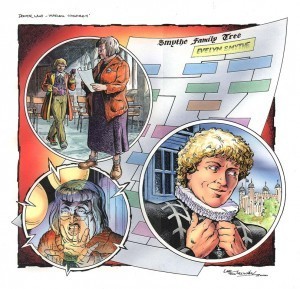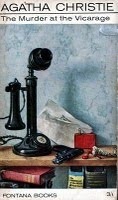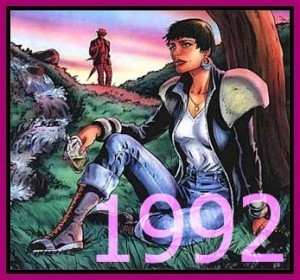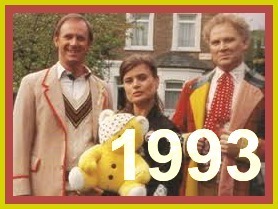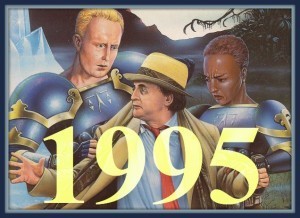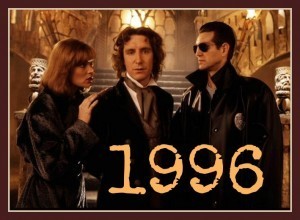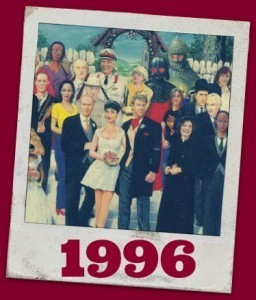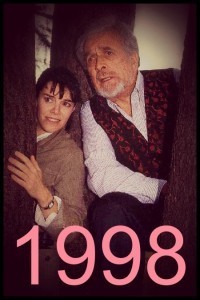Tansy Rayner Roberts's Blog, page 75
August 1, 2013
Friday Links is Stream of Consciousness
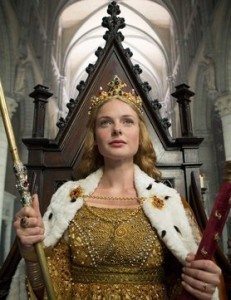 The Guardian profiles one of the neglected female writers of “1914,” May Sinclair – an accomplished modernist author (as well as the critic who coined the literary use of the term stream of consciousness) whose works are mostly now out of print.
The Guardian profiles one of the neglected female writers of “1914,” May Sinclair – an accomplished modernist author (as well as the critic who coined the literary use of the term stream of consciousness) whose works are mostly now out of print.
At the Mary Sue, Becky Chambers writes a stirring essay about her grandmother’s attitude towards video games, the death of books, and how it’s hard to appreciate the new benefits of changing technology when you’re still (understandably) mourning the loss of the art of letter writing.
Phillipa Gregory, author of The White Queen (now a successful female-led historical drama series that I am dying to watch) talks about unearthing history’s hidden women – and how historical fiction is way more fun than writing straight history, not least because of how accessible it becomes to readers. (and, cough, she points out that your favourite historians all use many of the same techniques she does in her fiction, including selective theories, story-based narratives & ‘picking sides’)
No Award looked at how Pax Australia was quite female-friendly as an event, and some reasons why they had not thought that would be the case. This led me to an excellent Ben McKenzie article about why he had decided against participating in Pax Australia.
Cheryl Morgan talks about the gender inbalance in publishing with particular attention to the ‘why’ of it.
Make me a Sammich talks about why it sucks when people assume you’re ‘Offended’ because you are pointing out gender issues (or any other social justice type issue) and why it’s belittling and derailing to rephrase protest or criticism as mere offense: I’m Not Offended.
Tabz has written a followup to last year’s much-linked essay about why she doesn’t cosplay because of her weight – in her update, she talks about how she now DOES cosplay, and has an awesome time doing it! Hooray!
Kate Elliott answers Six Questions and ends up talking in depth about her career thus far, and the many ways in which she is doing interesting things with the fantasy genre.
Seanan McGuire on why the whole ‘Geek Girl Credential Check’ issue seems to be getting worse, not better (and not just because more people are talking about it). She particularly looks at the double standard where a woman in a costume (sexy or otherwise) is likely to be harassed or harangued about whether she knows the entire history of that character ever, while many men often spend those same conventions snapping pictures (without permission) of those same women in costumes regardless of whether they know the difference between, say, Storm and Emma Frost.
[Tweet of the Week from @gailsimone: I was writing a kickass fight scene then I remembered about fake geek girls and made it a fashion show for cats with shoes.]
Next week is likely to be a Doctor Who frenzy, as the Twelfth Doctor is set to be officially announced on the BBC at 7pm on Sunday night. In the mean time check out my favourite wishlist yet of future Doctors, the Verity! podcast (not featuring me) discussing the possibilities of a Female Doctor (just got that one under the wire, ladies, well done) and the beginning of a new Nerdist series of blogs about Doctor Who from the start. Yes, the very start. Season One.
Meanwhile, Big Finish have announced that their entire first 50 plays will be available at the ‘Fiver’ for a CD, 2 bucks or so for Download price – FOREVER. Sadly I already have all of them, but this is a great deal. I may have to post soon with my recommendations as to which ones to snap up.
Oh and the Glitter and Mayhem reviews are starting to roll in and this one has nice things to say about my story as well as the anthology as a whole. Woohoo!
In conclusion, Lois Lane is better than Batman.
July 29, 2013
All About Evelyn [WHO-50—2000]
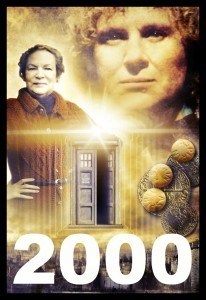 Ever since Tom Baker’s Fourth Doctor met Beatrix Lehmann’s Professor Amelia Rumford in 1978’s The Stones of Blood, Doctor Who fans have been speculating about the potential of an ‘older lady’ companion for the Doctor.
Ever since Tom Baker’s Fourth Doctor met Beatrix Lehmann’s Professor Amelia Rumford in 1978’s The Stones of Blood, Doctor Who fans have been speculating about the potential of an ‘older lady’ companion for the Doctor.
We still have never seen this in the show itself, the closest examples being one off “companions”/guest stars Adelaide Brooke (Lindsey Duncan) and Wilfred Mott (Bernard Cribbins) in the 2010 specials.
Big Finish, however, spent their early years experimenting with many of those long-lived fannish wish lists. So, Peri got to wear trousers and talk about botany more often, Mel got entire stories where she didn’t have to scream once (and/or her computer programmer skills were relevant), the Sixth Doctor got a new coat and some manners, we were treated to historical stories and companions aplenty, and everyone who had not yet met the Brigadier got their chance.
Oh, and Dr Evelyn Smythe stepped aboard the TARDIS.
Maggie Stables is an excellent actress who gives a great performance in every one of her stories, able to play all manner of facets of the character including ‘huffy professor,’ ‘endearing substitute granny,’ ‘sarcastic academic,’ ‘soppy romantic’ and ‘slightly scared but ever so brave in the face of aliens and being stranded in the cold of space and Axons and that sort of thing.’
art by lee sullivan
I have to say, I was alarmed to listen to her first story, The Marian Conspiracy (after I’d listened to several of her later adventures) and discover that the self-identifying ‘old lady’ history lecturer is actually only 55 when she meets the Doctor for the first time. She’s practically a spring chicken! She’s in academia, 55 is hardly ripe for retirement.I do really enjoy the idea of bringing in a history professor as the Doctor’s companion, and writer Jacqueline Rayner sends Evelyn back in time to one of her specialty periods (Elizabethan) straight away to explore the possibilities of that. It’s an opportunity to look at the ways in which History The Discipline is very different to ‘actual’ history (as was used to great effect when teacher Barbara was resident in the TARDIS). Evelyn’s overconfidence at striding around post-Tudor London is immediately punctured as she discovers too late that it’s not Good Queen Bess on the throne as she expected!
Evelyn is an excellent match for the Sixth Doctor. She has her own pompous streak to counterbalance his, leading to the kind of one-upmanship and banter-between-equals dynamic that worked so well on the TV when Colin Baker’s Doctor was up against characters like Glitz, the Valeyard, the Rani, the Master and the Inquisitor.
What Evelyn doesn’t do (as is sometimes suggested) is ‘tame’ or ‘soften’ the Sixth Doctor by her presence, though he certainly does become far less abrasive in her company. Her willingness to call him on his bullshit from time to time is deeply refreshing.
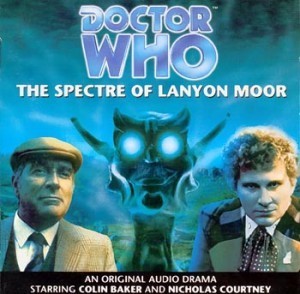 The second of their adventures in 2000, The Spectre of Lanyon Moor by Nicholas Pegg, is another excellent introduction/establishing story for Evelyn, though it’s probably best remembered as ‘the one where Six and the Brig first meet if you don’t count Dimensions in Time.’
The second of their adventures in 2000, The Spectre of Lanyon Moor by Nicholas Pegg, is another excellent introduction/establishing story for Evelyn, though it’s probably best remembered as ‘the one where Six and the Brig first meet if you don’t count Dimensions in Time.’
This creepy story of science, moors and mysterious happenings in Cornwall feels very much like a 70’s adventure – it’s probably most comparable in tone at least to New Who’s “Hide” and has some lovely character moments for all three of the lead actors as well as James Bolam and Susan Jameson (whose portrayal of Mrs Wibbsey is easily the best thing about the Hornet’s Nest etc. series of BBC Audios that brought Tom Baker back to the role of the Doctor – indeed, she certainly should count as the second ‘old lady’ companion in the ever stretchable Doctor Who canon).
The third and final Evelyn story of 2000, Dalek Empire: The Apocalypse Element by Stephen Cole, is not one of my favourites – it’s notable for introducing Evelyn to the Daleks if you care about that sort of thing, and especially notable for bringing Lalla Ward’s Romana into the Big Finish Doctor Who universe (the New Adventures pulled her out of E-Space) and establishing her as the President of Gallifrey. This would be quite important in many of the Big Finish storylines, apart from being only right and proper.
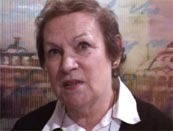 Dr Evelyn Smythe would go on to be an important figure in the life of the Sixth Doctor for the next decade – leaving him more than once and returning, meeting his Seventh persona once or twice (though he was of course not HER Doctor), and even managed to have a few adventures in entirely the wrong order.
Dr Evelyn Smythe would go on to be an important figure in the life of the Sixth Doctor for the next decade – leaving him more than once and returning, meeting his Seventh persona once or twice (though he was of course not HER Doctor), and even managed to have a few adventures in entirely the wrong order.
A marvellous, sneaky subplot that began in Project: Twilight in 2001 would not only weave in and out through Evelyn’s adventures with the Sixth Doctor, but also the Seventh Doctor’s adventures with new companion Hex from 2004 onwards, until finally being resolved in the spectacular Project: Destiny and A Death in the Family in 2010.
My favourite and most highly recommended Evelyn adventures are:
July 26, 2013
Agathon #13 The Murder At the Vicarage (1930)
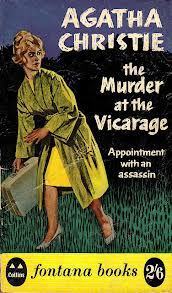 Kathryn and I started out with a challenge to read every book written by Agatha Christie, in order of publication – we’re blogging as we go along. We spoil all the things!
Kathryn and I started out with a challenge to read every book written by Agatha Christie, in order of publication – we’re blogging as we go along. We spoil all the things!
KATHRYN:
So, first, I just need to get it off my chest that one of my first shocks in this book is that Lettice Protheroe’s name is Lettice, and not Lettuce. I have read and seen this book several times before and to me she is always *Lettuce*. Having read the book before also meant that the murderer was not a surprise, nor were any of the other mysteries that were uncovered during the story. And this meant I could really focus on how Miss Marple is portrayed in her first full length book*. Miss Marple is certainly not the star of ‘The Murder at the Vicarage’, which is narrated, perhaps appropriately, by the Vicar (Mr Clements). She is introduced of one of several gossipy old ladies at a morning tea held by the Vicar’s wife, the inappropriate Griselda, and both the Vicar and Griselda have relatively low opinions of these ‘old cats’, as they are referred to often. Actually I suspect that Christie might have been writing this book so that Miss Marple herself was a surprise – it only becomes apparent that Miss Marple’s ‘gossip’ has rather more substance than Mrs Price Ridley’s or Miss Hartnell’s as the story develops. I wonder if anyone realised how iconic she would become.
The narration by the Vicar is quite reminiscent to that of Hastings narration for Poirot – or even of Dr. James Sheppard (the murderer) in ‘The Murder of Roger Ackroyd’, and it seems to be a common technique for Christie to use in her proper ‘whodunnits’ (as compared to the slightly whacky spy stuff we have also seen to-date). I guess it’s a good technique because the narrator can be led on a few wild goose chases and suitably surprised when the murderer is revealed. The narrator can also be unreliable – quite spectacularly so in the case of Dr Sheppard – and even I think a little bit in the case of the Vicar, who I think doesn’t like to admit just how much he loves his inappropriate wife.
Miss Marple doesn’t have a constant companion, so I will be looking with interest to see how the narration is undertaken in future Marple books (because for the life of me I cannot remember!!) I was surprised that Miss Marple’s nephew, the writer Raymond West, was present in this, her first book. I had imagined he was an addition of later stories, and he was a good deal more fashionable and callow than I remember him, though again perhaps that again is coloured by the Vicar’s narration (and potential jealousy of the attraction of Griselda to Raymond!)
And just a word on the murderer(s). Is it my imagination, but have a number of Christie’s murderers to-date been rather charming men who turn out to be far more ruthless than first seems? Perhaps I should start a tally. I also wonder how scandalous it was that Lawrence Redding and Mrs Protheroe were having an extramarital affair in 1930. It’s not so shocking now, but there are a number of hints that several ladies could have been gallivanting around with Lawrence, which surely was a bit risque?
All in all, I really enjoyed this reread of ‘The Murder at the Vicarage’. It’s full of excellent misdirection, character studies and village gossip, which is really what I think of when I think of a Christie whodunnit.
*Apparently Miss Marple’s first appearance was in a short story ‘The Tuesday Night Club’, written in 1926. However the collection it was published in – ‘The Thirteen Problems’ – was not published until 1932, so we have a few books to go until we get to it…
I really enjoyed this! I hadn’t read it before so I was quite surprised at how unappealing Miss Marple was early on – she seemed really gossipy and horrible and gradually became more and more likeable as the story went on. By the end she felt more like the Miss Marple I know from later books – gentler and more knowing and subtle. Possibly this is a case of the character simply growing as the author wrote her, but I like to think it’s because, as you say, the vicar’s perspective also shifts throughout the novel.
The story felt so similar to Roger Ackroyd, largely because of the way the narrator was set up, that I was almost convinced that our lovely vicar had in fact done the murder himself, except that I was fairly sure if she had pulled that trick again I would have heard about it. The Len-Griselda relationship was fascinating, and itself something of a mystery to be unravelled. I was very happy that there was nothing at all to be suspicious about either of them, as Griselda in particular was such a funny character. How terribly modern of her to commit to being an appalling housewife, and to cleave to her bad maid in order to keep her!
Len reluctantly convincing Mary to stay was one of my favourite scenes in the book, but it was full of all kinds of domestic gems.
The plot of this one is fascinating too – it’s another tricky one, though not as famous I guess as ‘they all did it’ or ‘the narrator did it’ to be talked about more? But I like that once again Christie is providing meta commentary on the genre of the murder mystery, in this case noting that realistically, the most obvious suspect is usually the murderer. And of course this has the whole ‘if a murderer was clever they would act suspiciously because acting innocent is a dead giveaway’ trick to it, which is nicely done.
Raymond was quite appalling! I’ve never seen him on screen before, only remember Miss Marple talking about him, so I was quite amused by what a vulgar intellectual snob he seemed to be. Again, though, the vicar’s perspective colours everything.
All in all, this is a lovely launch for Miss Marple and I like how much we get to see her working out how exactly a little old lady should go about being a detective, from first principles. Can you believe it was another twelve years before she appeared in another novel? Thank goodness for short stories!
PREVIOUSLY:
The Mystery of the Blue Train (1928)
The Seven Dials Mystery (1929)
Partners in Crime (1929)
The Mysterious Mr Quin (1930)
COMING NEXT:
The Sittaford Mystery (also Murder at Hazelmoor) (1931)
Peril at End House (1932)
July 25, 2013
Friday Links is the Human Experience
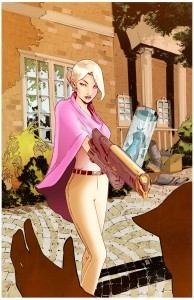 A great post at Bitch Magazine about gender and comics as discussed at last weekend’s ComicCon – including the brilliant quote that “female experience is the human experience.” Also, the all-female X-Men comic outsold every other title in the month it was released. And Supurbia sounds really interesting, from the comments…
A great post at Bitch Magazine about gender and comics as discussed at last weekend’s ComicCon – including the brilliant quote that “female experience is the human experience.” Also, the all-female X-Men comic outsold every other title in the month it was released. And Supurbia sounds really interesting, from the comments…
Coverage of the Women Who Kick Ass panel at ComicCon, and the unfortunate sexist attitudes from some of the audience.
This week’s MindMeld asks for recommendations of the best SFF stories by women.
Make Me a Sammich (best feminist blog title ever) thanks the trolls, and talks about the positive side effects that they bring with them. It’s not quite as sarcastic as you might think.
The new Aussie social justice pop culture blog No Award puts up their manifesto, with bonus discussion of Garth Nix’s Sabriel on the side – and why it’s important to not always populate your fantasy with so many redheads!
Over at the Momentum blog, Tehani talks about literary cosplay. What fictional character would you dress up as?
L. Timmel Duchamp at Aqueduct Press had some nice commentary on the last Galactic Suburbia and our discussion of the Tor.uk slushpile stats.
Kirkus reviews looks at Margaret St Clair, one of the many important women of the pulp SF era who tend to get mysteriously left out of the history.
Joshua Palmatier talks about setting up a new small press over at SF Signal, with direction to the current Kickstarter to make Zombies Need Brains happen.
In other Kickstarter news, I signed up to support The Wife and Blake, a new blogging project from the people who brought you the fantastic The Wife in Space.
July 24, 2013
WHO-50 – The 90′s
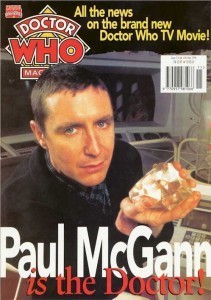 I’m pretty sure that decade took a bit longer to get through the first time around…
I’m pretty sure that decade took a bit longer to get through the first time around…
The 1990′s is often characterised as Doctor Who’s Wilderness Years (along with the first half of the Noughties) but as we’ve seen, there was a whole lot going on. I’m always surprised that Virgin were only publishing their New Adventures for five and a bit years considering how many novels they managed to produce in that time, and there were also the BBC books, comics, audios, fanfilms, comedy skits and so many creativity whirling around the heads of Doctor Who fans – it’s not exactly surprising that we were able to pick ourselves up so calmly after the TV Movie failed to follow through with a series proper.
It’s also not surprising that Doctor Who Magazine got to keep on publishing, given how much there was to talk about.
By the end of the 90′s, Paul McGann was well established in the heads of most fans as ‘the Doctor’ despite only having had an hour and a half screen time. Luckily for us, the role was not yet done with that particular actor yet, and vice versa…
This was the decade in which Doctor Who was mostly not here, and yet – it never quite went away, either!
If you haven’t had a chance to catch up with my latest decade’s worth of WHO-50 posts, now’s your chance.
For more WHO-50 goodness, check out The Eighties, The Seventies and The Sixties.
Verity! Episode 20 – Yes! Master
 This week a slightly smaller Verity! crew tackles the Master (but not literally–except maybe in Deb’s dreams). Join Deb, Erika, and Tansy as we cover the different iterations of the Doctor’s arch enemy–from the classy to the crazy and everything in between. See who likes which Master. Find out which Master none of us likes (you can probably guess). Decide for yourself if Delgado’s Master is the same as Peter Pratt’s (we don’t agree).
This week a slightly smaller Verity! crew tackles the Master (but not literally–except maybe in Deb’s dreams). Join Deb, Erika, and Tansy as we cover the different iterations of the Doctor’s arch enemy–from the classy to the crazy and everything in between. See who likes which Master. Find out which Master none of us likes (you can probably guess). Decide for yourself if Delgado’s Master is the same as Peter Pratt’s (we don’t agree).
^E
Also covered:
The Memory Cheats – TMDWP 074!
Karen Gillan’s shaved head!
New podcasts: Reality Bomb! and Terminus!
Download or listen now (runtime 1:08:54)
Download: verityep20.mp3
July 23, 2013
Nothing to Prove
Love this! Thanks to Lynne M Thomas for the heads up.
July 22, 2013
The Curse of Fatal Death [WHO-50—1999]
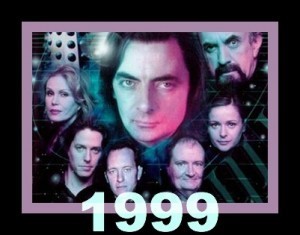 Doctor Who came back in 1999, and Steven Moffat was writing it.
Doctor Who came back in 1999, and Steven Moffat was writing it.
Yes, yes. I know it was just a sketch for Comic Relief. But so was Blackadder & the Roundheads, and that’s basically canon, right?
By 1999, telly Doctor Who felt gone for good, and yet I’m pretty sure it’s about that time that I went to a Swancon or Aussiecon panel and saw a bunch of fans (in my memory it was Grant, Danny & Mondy…) talking about what Doctor Who would have to do, to come back properly as television.
After ten years of almost no British science fiction on TV, while America had given us the increasingly more expensive X-Files, Star Trek: DS9, Star Trek: Voyager and Babylon 5, it all looked pretty dire. The better science fiction special effects got, the less likely it seemed that British creators would have either the funding or the bottle to try. (It’s hilarious now to look back and remember how awesome the Star Trek & Babylon 5 effects were at the time)
A new Doctor Who would have to follow the Buffy model, the panel suggested, rather than trying to compete with the big space operas. 45 minute episodes, a story arc, an ensemble cast probably based around the same time period, or returning to it regularly to save money. It would need banter, wit, monsters and kissing, and as few spaceships or alien planets as possible.
I sat in the audience thinking, “That doesn’t sound like Doctor Who to me.”
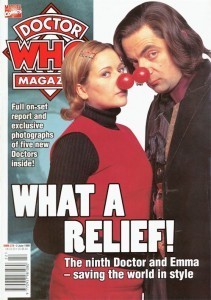 But in 1999, Comic Relief brought Doctor Who back and showed, actually, that it could be done. Having experienced the UK Comic Relief telethon properly when living in England in 1991, I am always a bit sad to miss out (yay YouTube for bringing me the best bits) but in 1999 even in Australia we heard about The Curse of Fatal Death (possibly just those of us who subscribed to Doctor Who Magazine heard about it, actually now I come to think of it), and I was rapt when it turned up on VHS in our local ABC shop, only a few months after it had gone out on the BBC.
But in 1999, Comic Relief brought Doctor Who back and showed, actually, that it could be done. Having experienced the UK Comic Relief telethon properly when living in England in 1991, I am always a bit sad to miss out (yay YouTube for bringing me the best bits) but in 1999 even in Australia we heard about The Curse of Fatal Death (possibly just those of us who subscribed to Doctor Who Magazine heard about it, actually now I come to think of it), and I was rapt when it turned up on VHS in our local ABC shop, only a few months after it had gone out on the BBC.
Seriously, we were not used to getting this stuff straight away.
It was a four parter, each five minutes long, and packed with the kind of “timey-wimey” time travel jokes that had always existed around Doctor Who, but had never been acknowledged within the show. Studio-bound, evidently on the cheap, it still managed to look better than almost every alien planet in 1980’s Who. Not a quarry in sight, but you can’t have everything.
Rowan Atkinson WAS the Doctor, the first official BBC attempt at The Ninth Doctor (we’re up to four now, right?). I don’t know if anyone expected him to play it straight, but he did and it worked. He was dressed in the TV Movie mode: historicalish gentlemanly attire and a long wig, which is fair enough because no one was QUITE ready for the leather jacket look yet.
Then there was Emma, played by Julia Sawalha. On the one hand she was a quintessential default Doctor Who companion (dressed, it has to be said, not a lot unlike our first glimpse of Clara Oswin Oswald). She was a safe choice for the role, as a very recognisable face thanks to a few plum roles over the previous decade (notably as Saffron in Absolutely Fabulous and Lydia Bennet in the best loved version of Pride and Prejudice of all time, plus a few sitcom daughters, though many of us were still nursing a deep attachment to her Lynda Day from Press Gang, written by a baby-faced Steven Moffat back in the late 80’s).
I’m also not imagining that Julia Sawalha had been widely rumoured as being a potential companion back in the day, am I? She was certainly the right age, and I’m pretty sure her name was tossed around with that of Catherine Zeta Jones as the theoretical Safecracking It Girl companion they had in mind to replace Ace.
In any case, the most important thing about Emma was the revelation that she and the Doctor were a) in love, b) engaged and c) about to settle down to get married, the Doctor retiring from saving the universe.
Honestly, I can’t think of anything more controversial, especially remembering the howls of derision and alarm that went around the world when Paul McGann’s Eighth Doctor kissed Grace Holloway.
But it was comedy, right? This would never actually happen in real Doctor Who.
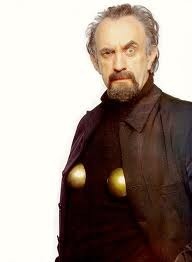 Speaking of things that we thought would never actually happen in Doctor Who: Moffat managed to hurl nearly all of them at the screen in his 23 minutes running time. The Master (played wonderfully by Jonathan Pryce) and the Doctor used time travel to outwit and out manoeuver each other, which resulted in the Master getting older and older but always returning to this exact moment to continue his hopeless task. There were more than four Daleks on screen at once, thanks to the wonders of either CGI or matte painting (it was 1999, okay, it looked FANTASTIC then!).
Speaking of things that we thought would never actually happen in Doctor Who: Moffat managed to hurl nearly all of them at the screen in his 23 minutes running time. The Master (played wonderfully by Jonathan Pryce) and the Doctor used time travel to outwit and out manoeuver each other, which resulted in the Master getting older and older but always returning to this exact moment to continue his hopeless task. There were more than four Daleks on screen at once, thanks to the wonders of either CGI or matte painting (it was 1999, okay, it looked FANTASTIC then!).
Trivia note: this story represents the final performance of legendary Dalek operator Roy Skelton, and also the first post-production work of The Mill on Doctor Who.
And, oh yes, the Doctor died and regenerated four times in the course of the story. Yes, that did take him past a certain barrier we thought would never be broken. In more ways than one!
To Emma’s dismay, her love disappeared before her eyes and was replaced… by the more handsome (“lick the mirror” is a specific subset of handsome), debonair and fast-talking Tenth Doctor, played by Richard E Grant. Sound familiar? She recovered from this shock rather quickly as, well. He was a bit of all right, really.
Sadly, one industrial accident later, the Tenth Doctor transformed into the shy and distinctly shy-with-girls Eleventh Doctor, played by Jim Broadbent. Slightly appallingly, Emma sent him back into immediate danger in the hopes of getting a hotter replacement.
The Twelfth Doctor promptly emerges, played by Hugh Grant, still floppy-haired and affable in his acting period before he learned that villains and cads were more fun.
EMMA: Re-sult.
But the best was yet to come. Well, the best for us, not for Emma. In the final moments of the story, the Twelfth Doctor died and was pronounced actually dead, not regeneratable, fully gone:
EMMA: Doctor, listen to me. You can’t die, you’re too… You’re too nice. Too brave, too kind and far, far too silly. You’re like Father Christmas! The Wizard of Oz! Scooby Doo! And I love you very much. And we all need you and you simply cannot die!
MASTER: He was the best and bravest of all my foes. From this day forward I shall renounce evil and follow the path of goodness to honour my fallen foe.
BLACK DALEK: The Doctor saved the Daleks. The Daleks too will honour their mortal enemy.
EMMA: He was never cruel and never cowardly, and it’ll never be safe to be scared again.
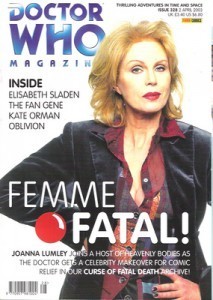 At which point, we got the Thirteenth Doctor, played by Joanna Lumley. Not only did Joanna have the best outfit of all the Doctors (okay they all wore the same outfit but she totally wore it best), she also explained exactly what was the big deal about the sonic screwdriver in a way that would make Jack Harkness proud (three settings!) and she finally admitted what we’ve always known – that the Doctor and the Master make a damned fine couple.
At which point, we got the Thirteenth Doctor, played by Joanna Lumley. Not only did Joanna have the best outfit of all the Doctors (okay they all wore the same outfit but she totally wore it best), she also explained exactly what was the big deal about the sonic screwdriver in a way that would make Jack Harkness proud (three settings!) and she finally admitted what we’ve always known – that the Doctor and the Master make a damned fine couple.
It’s sad that such a fantastic genderfloomp should end in a reassertion of heteronormativity – the Femme Doctor and the Master going off arm in arm after Emma decided the Doctor was ‘not the man I fell in love with’ – and indeed, when I described the awesomeness of this story to a friend many years later I totally misremembered the Doctor and Emma going off together instead.
But, oh. The Curse of Fatal Death is such a silly, sweet and funny celebration of Doctor Who, and it did feel like more than that, back in the day. Through the cheesy lines and the time travel jokes and the smutty innuendo, there was a sense that the joke was not on Doctor Who fans, it was BY Doctor Who fans – and actually, if so many serious, high-profile professionals could come together and make this thing, then how far away could we be from actual Doctor Who back on our screens? A REAL Doctor Who, a Doctor Who no longer reacting against perceptions of how wondrous Star Trek special effects were (really, not that hot), but prepared to stand up and be British in the face of alien space monsters.
We would have to wait another six years, as it turned out. But was it worth the wait?
ELSEWHERE ON 1999:
The Players Trilogy by Terrance Dicks [reviewed by Nicholas Whyte]
Even more non-canonical Doctors- the cast of the 90s Steven Moffat-penned Comic Relief sketch “The Curse of Fatal Death” [Paul Hanley]
PREVIOUSLY:
Galactic Suburbia 85
In which we talk about gender stuff in publishing and gaming, Alex votes in the Hugos and Alisa’s thesis starts coming together. A good week!
Caught Our Eye
Sexism in genre publishing: A Publisher’s Perspective
JK Rowling and Robert Galbraith – An Open Letter to Writers & Would Be Writers
The Mary Sue & gaming culture: What we aren’t talking about when we talk about inclusion and representation, and what we are
Culture Consumed:
Alex: Hugo reading (novellas and novelettes)
Alisa: Publishing and Reading as Dissent: Resistance, Literary Tourism and Arsenal Press, Casey Stepaniuk (The Word Hoard Vol 1, Issue 1)
Tansy: Alanna the First Adventure by Tamora Pierce, All-New X-Men: Yesterday’s X-Men, Brian Michael Bendis & Stuart Immonen; Red Sonja #1 by Gail Simone; Much Ado About Nothing!
The Galactic Suburbia Road Trip – we have fun over at the SF Signal Mind Meld!
Tansy’s review of The Other Half of the Sky is up at the Cascadia Subduction Zone.
Kaaron Warren won a Shirley Jackson for “Sky”!
Please send feedback to us at galacticsuburbia@gmail.com, follow us on Twitter at @galacticsuburbs, check out Galactic Suburbia Podcast on Facebook and don’t forget to leave a review on iTunes if you love us!
July 19, 2013
Revisiting Tortall: Alanna The First Adventure
Tamora Pierce was a touchstone author for me in my teens, and helped to define what I wanted out of fantasy fiction. For a long time, she was on my annual re-read list, before I stopped, well, re-reading for nearly a decade. How do her Tortall books stand up to my 2013 self?
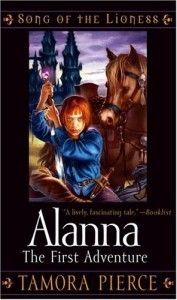 1. Alanna, The First Adventure, The Song of the Lioness Book 1, by Tamora Pierce
1. Alanna, The First Adventure, The Song of the Lioness Book 1, by Tamora Pierce
Ten-year-old Alanna wants to be a knight, and her twin brother wants to be a magician. She convinces him to swap places with her, so that he gets sent to the nunnery (and convenient nearby magic school) while she disguises her gender for four years to live her dream. Along the way she befriends both the prince royal and the king of thieves, learns to bind her breasts and hide her periods, builds up some kickass brawling skills to go with the sword work, and saves the kingdom a couple of times.
Tortall as a setting looks on the surface to be Standard Medievaland, but I know from future reading that there’s a lot more to it than that. In particular, while this particular time and place has some fairly traditional ‘ladies do embroidery) gender roles and expectations, it becomes more obvious later on that the kingdom has a long history of women picking up swords.
Like Harry Potter, these books age with the character, and the first one has always felt a bit kiddish to me – probably because I started reading the series originally with book 2, and it was hard to go backwards. Part of me still approaches Book 1 as being ‘filling in the backstory to where the series really starts’ but I’m not sure it’s just my original reading order that gives this impression – the book actually does skim a LOT.
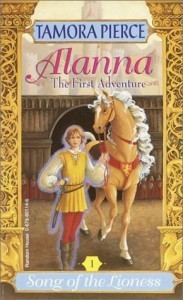 There’s a bunch of action (and several years) packed into a pretty slender volume, and while the set piece scenes are all very good, it feels like a lot of nuance is missed along the way. There’s a lot of telling rather than showing about Alanna’s friendships. In particular, the boy who dies from the plague and Alex who joins the suspicious Duke Roger as his squire – Alanna’s friendships with both of these young men are really important to the plot and yet apart from a bunch of ‘Alanna doesn’t swim when the boys do’ scenes, there’s not a lot of opportunity for us to get to know them.
There’s a bunch of action (and several years) packed into a pretty slender volume, and while the set piece scenes are all very good, it feels like a lot of nuance is missed along the way. There’s a lot of telling rather than showing about Alanna’s friendships. In particular, the boy who dies from the plague and Alex who joins the suspicious Duke Roger as his squire – Alanna’s friendships with both of these young men are really important to the plot and yet apart from a bunch of ‘Alanna doesn’t swim when the boys do’ scenes, there’s not a lot of opportunity for us to get to know them.
Having said all that – this is the beginning of a journey I am exceedingly fond of, and I do love Alanna for all her scratchy, fast-paced ways. The scenes in which she learns how to fight hard are particularly compelling, and I like the idea that balancing fighting with healing is such an important theme in these books.
I also think it’s interesting that Alanna has serious self esteem issues, some of which are natural to her and some which come specifically from the gender performance she is going through. She has guilt about the fact that the friendships which are so important to her are based on a big lie, and continues to worry about this even after two of her closest friends discover her secret and still like her afterwards. She has to work hard to compensate for her small frame, and to build up muscle and other tricks to balance this out. She also comes from a family that has never particularly valued her, and so the support and love she gets from the people around her (as represented not only by aid and assistance but by actual tokens of esteem – the horse that George gives her, the sword that Sir Myles allows her to keep) is something she also has to learn how to absorb.
The finale is not just about her winning the day, saving the prince and dealing with his knowledge of her secret – it’s also about Alanna coming to terms with her own worth. Telling Prince Jonathan that he should choose her as the squire and why is a big step for her.
This is the book that sets everything up – a girl, her friends, her sword, her enemy, and her horse. But much better is yet to come!

